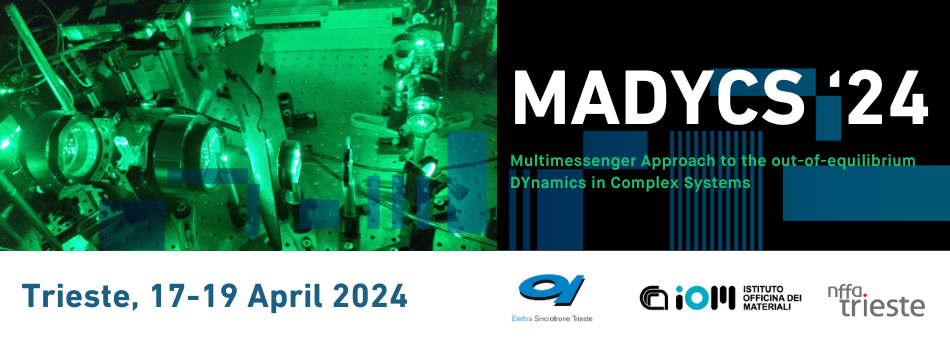Speaker
Description
Hybrid quasi-particles in condensed matter systems are observed at the degeneracy points between different degrees of freedom exhibiting non-zero coupling. These solid-state chimeras could be exploited in a wealth of applications, from transducers to sensors, to memory and logic units 1. In particular, magneto-elastic coupling allows for efficient magnon-phonon hybridization in the few gigahertz and inverse micron range [2], resulting in so-called magnon-phonon polarons.
The physics of such hybrids is typically modelled in the framework of coherent coupling (CC), which results in degeneracy lifting and gapping of the dispersion (avoided crossing, a.k.a. Wigner-Von Neumann hybridization gap). Recently, in the context of magnon-photon hybridization, a different coupling mechanism was observed, stemming from correlation in the dissipation of the parent modes into a common incoherent bath: this further channel was dubbed dissipative coupling (DC). DC is raising interest for its relevance in the ever-present competition between coherence and dissipation in coupled systems [3].
We report on magnon-phonon hybridization as observed in a magnonic-phononic crystal: the sample is composed of a regular array of thin (20 nm) ferromagnetic stripes, with sub-micron periodicity [4]. Via ultrashort optical pulses we trigger magnons and acoustic phonons, and we observe their intertwined dynamics via time-resolved Magneto-Optical Kerr Effect [5]. Our results provide evidence of the coexistence of CC and DC in the coupled magnon-phonon polaron dynamics [6]. Moreover, we obtain preliminary results hinting at the possibility to suppress DC by tuning the direction of an external static magnetic field with respect to the sample anisotropies. This observation suggests that suitable fields allow for shaping the dissipation rates of the parent modes, resulting in choking of the dissipation-based DC channel.
1 G. Kurizki et al., PNAS 112, 3866-3873 (2015). DOI: 10.1073/pnas.1419326112
[2] P. Carrara et al., Phys. Rev. Appl. 18, 044009 (2022). DOI: 10.1103/PhysRevApplied.18.044009
[3] M. Harder et al., J. Appl. Phys. 129, 201101 (2021). DOI: 10.1063/5.0046202
[4] R. Silvani et al., J. Magn. Magn. Mater. 450, 51-59 (2018). DOI: 10.1016/j.jmmm.2017.03.046
[5] M. Brioschi et al., Opt. Lett. 48, 167-170 (2023). DOI: 10.1364/OL.476958
[6] P. Carrara et al., arXiv:2401.16994arXiv. DOI: 10.48550/arXiv.2401.16994

